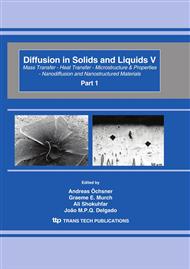p.254
p.263
p.269
p.275
p.281
p.294
p.300
p.308
p.318
A Coupled Model of Two-Phase Diffusion and Flow through Deforming Porous Cosserat Media
Abstract:
Simulation of mining induced rock deformation, rock fracture enhanced permeability and fluid and gas diffusion and flow process is a complex task. A new three dimensional coupled mechanical two-phase double porosity desorption and diffusion finite element code called COSFLOW has been recently developed by CSIRO Exploration and Mining to service the mining industry’s need. A unique feature of COSFLOW is the incorporation of Cosserat continuum theory in its formulation. In the Cosserat model, inter-layer interfaces (joints, bedding planes) are considered to be smeared across the mass, i.e. the effects of interfaces are incorporated implicitly in the choice of stress-strain model formulation. An important feature of the Cosserat model is that it incorporates bending rigidity of individual layers in its formulation and this makes it different from other conventional implicit models. The Cosserat continuum formulation has a major advantage over conventional continuum models in that it can efficiently simulate rock breakage and slip as well as separation along the bedding planes. Any opening/closure along a bedding plane may introduce a strong anisotropy in fluid flow properties of the porous medium. This, in turn, will impact on the fluid/gas flow behaviour of the porous medium. This paper will briefly describe the Cosserat continuum theory, the treatment of permeability changes with rock deformation and the coupling of the two-phase dual porosity fluid diffusion- flow model and present a number of examples highlighting the capability of the developed code in simulating the mining induced rock deformation, permeability changes and fluid diffusion and flow will be presented.
Info:
Periodical:
Pages:
281-293
Citation:
Online since:
April 2010
Authors:
Keywords:
Price:
Сopyright:
© 2010 Trans Tech Publications Ltd. All Rights Reserved
Share:
Citation:


